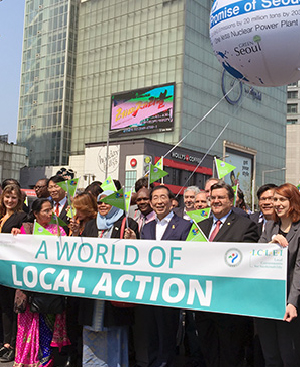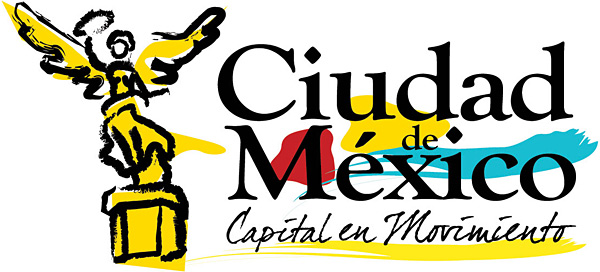- Home
- Reporting entities
- Municipality of Cuenca
Municipality of Cuenca
Ecuador Mayor: Marcelo Cabrera Palacios-
Population 400000

-
Area 70.59km 2
-
GDP N/AN/A
-
Targets by N/A N/Aemission
Targets by Municipality of Cuenca
There are no targets yet
- Start year: 2010
- Type: Technical / Infrastructural
- Status: Under construction / set up
Of the urban fleet of 475 buses, 80% enter the historic center of the city with an average speed of 7 to 10 km / h. Several bus lines share the same route generating a high rate of auditory, visual and atmospheric pollution.
It is in this context that the tramway is being implemented as a backbone of the integrated transport system of Cuenca. At completion, it will have a length of 21.4 km, transport 106,000 passengers per day, travel at an average speed of 22 km / h, and avoid the current emission of 11,000 ton / year of CO2. The total cost of the project is $232,000,000. Currently, the project is 80% complete.
Ongoing projects pertaining to mobility and services reflect a major step towards more sustainable transportation system, both in terms of the construction of the tramway and the integrated public transport system.
Municipal actions have been put in place that have lead to a progressive rationalization and restriction of the parking of private vehicles in public spaces: new infrastructure projects and the removal of parking spots on public streets.
In short, the objective is to replace the mobility patterns linked to motorized private traffic by more sustainable alternatives such as a bicycle, walking, or public transport.
As a small city, distances to travel in Cuenca are relatively short and reasonable. Sectors of the city, primarily in the historical center, that experience the most traffic and congestion will be the most susceptible to change regarding road access to foot traffic.
The Plan of Mobility and Public Space aims to: reduce the dependency on private vehicles, reduce the average length of travel (urban dispersion), reduce the number of motorized trips, and encourage alternative modes of transportation.
The main strategies of the project are: the generation of public policies to "rationally" order the transit; the reordering and reorganization of the public transport system and the development of campaigns to promote a change of behavior among citizens, the generation of citizen awareness, the prioritization of pedestrian movement in city planning, through “Integrated Transportation Systems”, an increase in the percentage of cycling, the implementation of an efficient and effective Transportation Model that facilitates the mobility of the population (vehicular and pedestrian) and the regulation and control of traffic, to provide the necessary technological platform for the integration of mobility services, recovery, regulation and maintenance of public space and encourage their use and enjoyment.
The Mobility Plan involves in its construction all the actors of mobility that will allow the resulting model to parallel the characteristics of a compact and densified city. A city that will rescue public spaces for its citizens and look to include additional neighborhoods to its historical patrimony. Thus, the project aims to create a city where life can prosper.
- Transport
- Start year:
- Type: Public Participation/Stakeholder engagement
- Status:
The Environmental Management Commission—together
with SWISSCONTACT—realized a seminar for more than
120 participants representing the general population, the
productive sector, national and local governments, professional
associations, and university students. Carbon market
mechanisms were explained at the seminar alongside
economic and environmental opportunities afforded by the
implementation of climate-change mitigation measures.

- Start year: 2012
- Type: Technical / Infrastructural
- Status: In operation
Waste, including solid waste, generated in the homes of the canton of Cuenca are collected by the Municipal Sanitation Company of Cuenca (EMAC EP) and transferred to the Pichacay Landfill for treatment and final disposal. This process follows high technical and environmental standards.
There is a street sweeping coverage of 760 km of road per day, 30 km of which are done through a mechanized process in 21 parochial urban centers. The per capita generation is of 0.524 kg. per inhabitant per day (year 2016), indicating an approximate total of 350 tons of solid waste per day.
Cantonal coverage: 98.6% (urban and rural area).
The sanitary landfill is one of the components of the "Pichacay Human and Environmental Development Complex." It is located in the parish of Santa Ana, 21km from the city of Cuenca.
Through the implementation of the project, the following environmental results are expected:
- The reduction of CO2 pollution resulting from 14 thousand vehicles circulating daily in Cuenca; equivalent to 75,000 metric tons of CO2.
- Electricity will be available for 8,000 families.
The investment of the project is of 3,000,000 dollars, with EMAC EP being the primary contributor with 51% of the budget.
The construction of this project involves the drilling of 30 deep wells to extract the biogas and lead it to a system that removes its moisture. The latter then channels the product through a high-density polyethylene pipe, connected to two generators of 1MW power each. Starting from its operation in 2015, the project will benefit nearby populations by encouraging local development and contributing to the education and health of the area.
- Waste
- Other Emissions
- Start year: 2010
- Type: Technical / Infrastructural
- Status: In operation
In Cuenca, there are approximately 550 artisan bricklayers who maintain traditional productive processes that are not energy efficient and generate significant environmental impacts.
Craft bricklayers mostly use fuels with high environmental impacts in low-energy furnaces. This process affects the air quality of nearby settlements and emits greenhouse gases that impact climate change and human health. The use of firewood, tires, and plastics among other fuels also contribute significantly to air pollution, deforestation, and water availability, all the while increasing the causes of climate change.
Per the information available in the emissions inventory of the Cuenca canton, the brick industry is the second generator of carbon monoxide (CO) after vehicular traffic with 2465 Ton / year. In addition, vehicular traffic is the main generator of particles (PM10).
The Municipality of Cuenca, as responsible for the sustainable development of its jurisdiction and concerned about the need to implement energy efficiency mechanisms in the highly polluting production of artisanal bricks, has considered it a priority to develop actions and activities aimed at improving the living conditions of artisan brick producers and therefore significantly reduce the GHG emission. Through the Energy Efficiency Project in EELA Ladrilleras, it is part of the Regional Project that was developed for artisanal bricklayers in seven Latin American countries (Mexico, Colombia, Ecuador, Peru, Bolivia and Brazil and Argentina) in order to mitigate climate change through the reduction of Greenhouse Gas Emissions (GHG) and improve the quality of life of brick producers, the impact of public environmental policies related to bricklaying, and the technical support to implement adequate technologies aimed at improving the production process, the integral management, and the energy efficiency of the brick industry. The goal of this project is to reduce the pollution and the emission of GHG.
Through the implementation of technology and the construction of efficient furnaces, the Municipality of Cuenca has achieved a reduction of around 15,000 tons CO2 per year and witnessed an increase in the profits of the bricklayers.
At the same time, these results are to be expected: fuel saving, reduction of burning time, increase of production, products of better quality, the reduction of black smoke, and the improvement of the working conditions of the brick industry.
- Residential
- Waste
- Transport
- Other Emissions
- Start year: 2010
- Type: Regulatory
- Status: In operation
Due to growing water demand for general use, water scarcity
events in recent decades and possible climate-change effects,
a study was realized with regard to the possibility of integrated
surface water regulation at the Tomebamba River hydrographic
sub-basin, a Cuenca River tributary. The installation of small reservoirs
will significantly reduce water-scarcity risks in the city of
Cuenca.

- Start year: 2011
- Type: Policy/Strategies/Action Plans
- Status: In operation
The Municipal Telephone, Water Supply and Sewerage Company ETAPA EP, develops the Integrated Watershed Management Program for Water Protection - IWMPWP, through the implementation of strategies to guarantee the quantity and quality of the water resource in the water recharge areas in the canton of Cuenca
About 85% of the territory of the water recharge area of the water supply sub-basins is covered by highlands and native forest, ecosystems of high ecological importance for the regulation of water flows, acts like a sponge that releases it slowly to the throughout the year.
Highlands have little resilience and low capacity of adaptation in front of the negative anthropic impacts that affect them, for this reason they are considered like ecosystems highly vulnerable.
The objective of the IWMPWP is to protect water sources for human consumption for Cuenca city, we will get this with an integrative and sustainable negotiation process with the watershed actors.
The IWMPWP works in the supply areas that supply the water systems that EPAPE EP manages directly and in those that are administered by local organizations. The former correspond to the contribution areas for the city of Cuenca and the latter to the rural sector, in a Management and Co-management process, respectively.
In the water supply areas for the city of Cuenca the IWMPWP executes a management process by which it leads the formulation and implementation of actions tending to guarantee the vital liquid. In the areas of contribution to the rural sector, a co-management process is carried out, which attempts to link the parish GADs and organizations that administer water systems to the process of protecting their water sources.
- Mutual agreements for water - MAW: These are voluntary agreements with landowners in the areas of water recharge in order to conserve the native forest and highlands, to recover the riparian vegetation (biological filters), to implement environmentally friendly agricultural practices; in return, ETAPA EP supports with incentives for good production and livestock practices in sites with aptitude.
In order to guarantee the environmental services of highlands and native forest and to safeguard its long-term conservation status, the following strategies are implemented:
a) Purchase of properties with high water yield, located in headwaters of watersheds with an investment amount of USD $ 1,337,400.00 and a total of 14,879 hectares for conservation.
b) Support for joining the Socio Bosque program, in coordination with the Ministry of the Environment of Ecuador
Expected benefits:
They will get adequate quantity, quality and continuity of water.
Protection of strategic ecosystems for the provision of water, (native forest and highlands).
Water boards will develop sustainable and innovative processes for the protection of their water sources.
Motivated and sensitized owners in the protection of water sources.

Mayor Marcelo Cabrera PalaciosMunicipality of Cuenca, Ecuador


